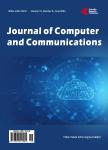Performance Analysis of Accelerator Architectures and Programming Models for Parareal Algorithm Solutions of Ordinary Differential Equations
Performance Analysis of Accelerator Architectures and Programming Models for Parareal Algorithm Solutions of Ordinary Differential Equations作者机构:Department of Electrical and Computer Engineering University of Wyoming Laramie USA
出 版 物:《Journal of Computer and Communications》 (电脑和通信(英文))
年 卷 期:2021年第9卷第2期
页 面:29-56页
学科分类:07[理学] 0701[理学-数学] 070101[理学-基础数学]
主 题:Accelerators Many-Core Directive-Based Time-Parallel Scaling Speedup
摘 要:Increasing needs for the study of complex dynamical systems require computing solutions of a large number of ordinary and partial differential time-dependent equations in near real-time. Numerical integration algorithms, which are computationally expensive and inherently sequential, are typically used to compute solutions of ordinary and partial differential time-dependent equations. This presents challenges to study complex dynamical systems in near real-time. This paper examines the challenges of computing solutions of ordinary differential time-dependent equations using the Parareal algorithm belonging to the class of parallel-in-time algorithms on various high-performance computing accelerator-based architectures and associated programming models. The paper presents the code refactoring steps and performance analysis of the Parareal algorithm on two accelerator computing architectures: the Intel Xeon Phi CPU and Graphics Processing Unit many-core architectures, and with OpenMP, OpenACC, and CUDA programming models. The speedup and scaling performance analysis are used to demonstrate the suitability of the Parareal to compute the solutions of a single ordinary differential time-dependent equation and a family of interdependent ordinary differential time-dependent. The speedup, weak and strong scaling results demonstrate the suitability of Graphical Processing Units with the CUDA programming model as the most efficient accelerator for computing solutions of ordinary differential time-dependent equations using parallel-in-time algorithms. Considering the time and effort required to refactor the code for execution on the accelerator architectures, the Graphical Processing Units with the OpenACC programming model is the most efficient accelerator for computing solutions of ordinary differential time-dependent equations using parallel-in-time algorithms.



